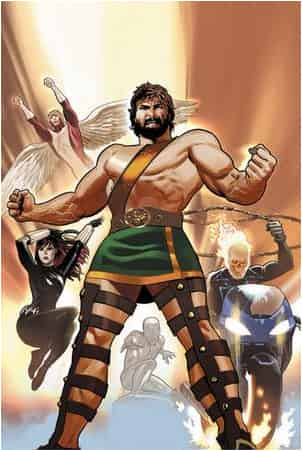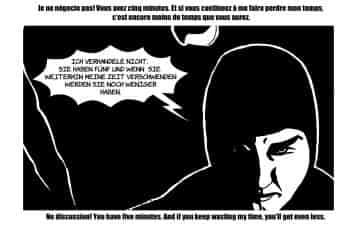Bonus
-
References in the story “See Vienna and Die”
The backdrop for this story was inspired by a February 2010 article by Blaise Gauquelin that appeared in L’Express magazine: « Vienne, nid d’espions de Téhéran, » which talked about Vienna being a nest of Iranian spies. We transposed the article’s contemporary feel for an early 80s Cold War setting. The article mentions the feeling of abandonment felt by Austrian authorities vis à vis their NATO allies, and uses this to justify a policy of cooperation.
-
(Français) Portrait de Francis Pelletier
Francis Pelletier , or “Grazo,” has been fascinated by comics since his early childhood. He started working as a comic writer at age 19 and, for the last 25 years, has been involved in the graphic arts and printing. He occasionally gives workshops on comics in schools and gives private drawing lessons. He is the writer, cartoonist, penciler and colourist for the characters of the comic Les Aventures de Rino et Ouistin. He has published five books in the last 24 years. He has also been the colourist for Soccerman, which appears in Soccermag and Québec soccer, and for the comics of artist Martin Roy.
-
Making it Exciting!
Commenting on something that Roger Stern said, Graeme McMillan looked at the failure of Marvel’s Champions series. According to Stern, the series was just a bunch of ideas aimed at developing an editorial concept without any real core concept. McMillan added that the Avengers or the Defenders could also be accused of being an editorial concept. His conclusion? The series didn’t work because it just wasn’t entertaining enough (“On ‘Fake Books’ and the Reason Behind Super-Teams,” www.newsarama.com, February 2, 2012). This is an idea that is worth talking about in greater length, so we’ll come back to it.
-
But what were they saying? (Blitzkrieg) – Part III
-
Levels of violence
A few months ago, Mark Waid stated, “Writing evil and writing violence, if you’re clever and do it right, can be two entirely different sets of visuals.” At the same time, Waid said he was sorry he had killed some of the characters he had created (DC Comics: Allegations of Editorial Strong-Arming in the Old 52, Russ Burlingame, comicbook.com, August 26, 2012). Without making excuses, we see different levels in the deaths of characters. At the lowest level of the pyramid, there is cannon fodder: interchangeable henchmen who are regularly eliminated or captured and who are totally anonymous. Their anonymity means that their death has no repercussions, since they were never truly alive for the reader. A little higher up are the villains whose death is the ultimate punishment for their misdeeds. We find this type of sacrificed lambs more problematic, since they are brought into the story to trigger a reaction from the hero, and their death aims to produce a dramatic effect. In some stories, like the James Bond movies, to give only one example, these characters are so predictable that we as viewers choose not to get attached to them. And lastly, there is the level at which a character’s death, whether or not it is natural, represents that character’s culmination. Violence is one thing, and having a character evolve is another, even if that requires the death of someone from his or her entourage.






